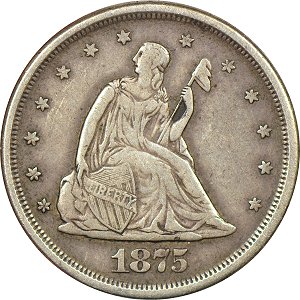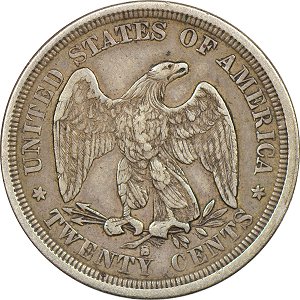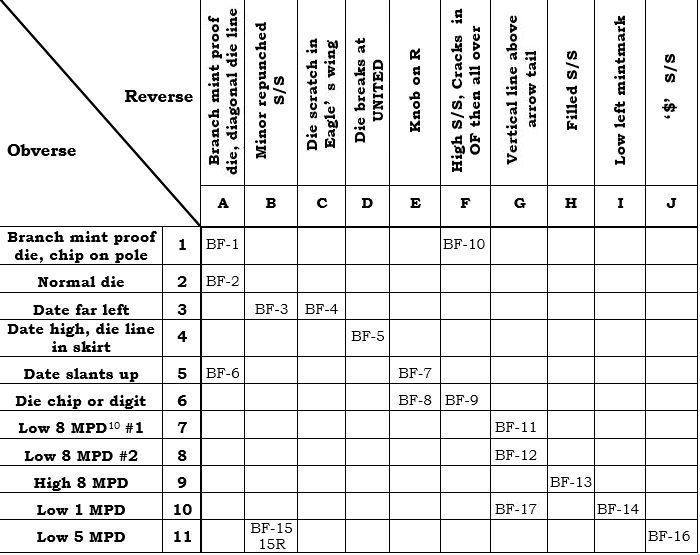

|
Mintage:
This issue has four different reverse dies with a repunched mintmark (RPM). The most popular one has the most-widely separated RPM and is commonly referred to as the $ variety.
The repunching on this variety is most visible on the serifs of the mintmark.
|
Wide S/S or '$' Mintmark |
 8 low in denticles #1 |
 8 low in denticles #2 |
 8 high in denticles |
||
 1 low in denticles |
 5 low in denticles |
 Die chip or possible digit? |
None of the misplaced dates or repunched mintmarks varieties are scarce and do not command a premium. Interestingly, it is somewhat more challenging to find an 1875-S that has neither
misplaced date digits nor a repunched mintmark.
Overall Scarcity:
1875-S is by far the most common date in the series, with an original mintage about eight times that of the next most-common coin, the 1875-CC.
The 1875-S is readily available in all grades, including mint state.
Comments:
As the most common coin in the series, it is the quintessential type coin. As such it was very common for collectors only seek out an 1875-S and ignore the other coins. In the past
it was common to find the great majority of twenty-cent pieces at a show or local coin shop were 1875-S. Recently this trend has changed and there are more of the other coins in the
series available for retail purchase.
Appearances vary widely with the 1875-S. Many of the coins were well struck with some examples proof-like, with wire rims and great details. Others were struck from worn-out dies,
with softness in the high points of the design, weak letters, and numerous die cracks. That said, the 1875-S provides the collector with the opportunity to obtain an attractive
example for his or her set, or their type collection. Nobody should settle for an impaired or otherwise unattractive example for a type coin, as a nice one will surely come along soon.
The 1875-S is a great coin for those collectors who like to study and collect varieties, die marriages, or progressive die states.
Die Marriages:
At least 11 obverse and 10 reverse dies were used resulting in at least 17 die marriages for the circulation strikes. The obverse dies have different date positions and a number of them have
evidence of misplaced date digits in the denticles. The reverse dies show different mintmark positions and a number of the dies exhibit repunched mintmarks of varying degrees.
One re-marriage of a die pair is known. A re-marriage results when a specific die pair is used and then a different reverse die is paired with the obverse die. This new die pair is used for
a while and then the obverse die is paired back to the first reverse die. Thus, the dies are re-married.
Because many of the dies were used in combination with multiple other dies, artifacts such as developing die cracks or gouges during the life of the die allows collectors to sequence the
emission order of the dies to a great extent. The following chart lists the currently known die marriages.
Table: 1875-S die marriage progression chart, showing BF numbers in sequence

The BF-15 die pair also features a re-marriage. That is, this same pair of dies was later put back together after that obverse was paired with a different reverse (Reverse J of BF-16).
10 MPD is an abbreviation for misplaced date.
